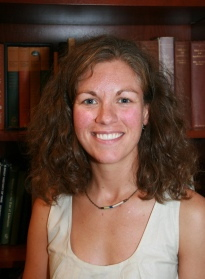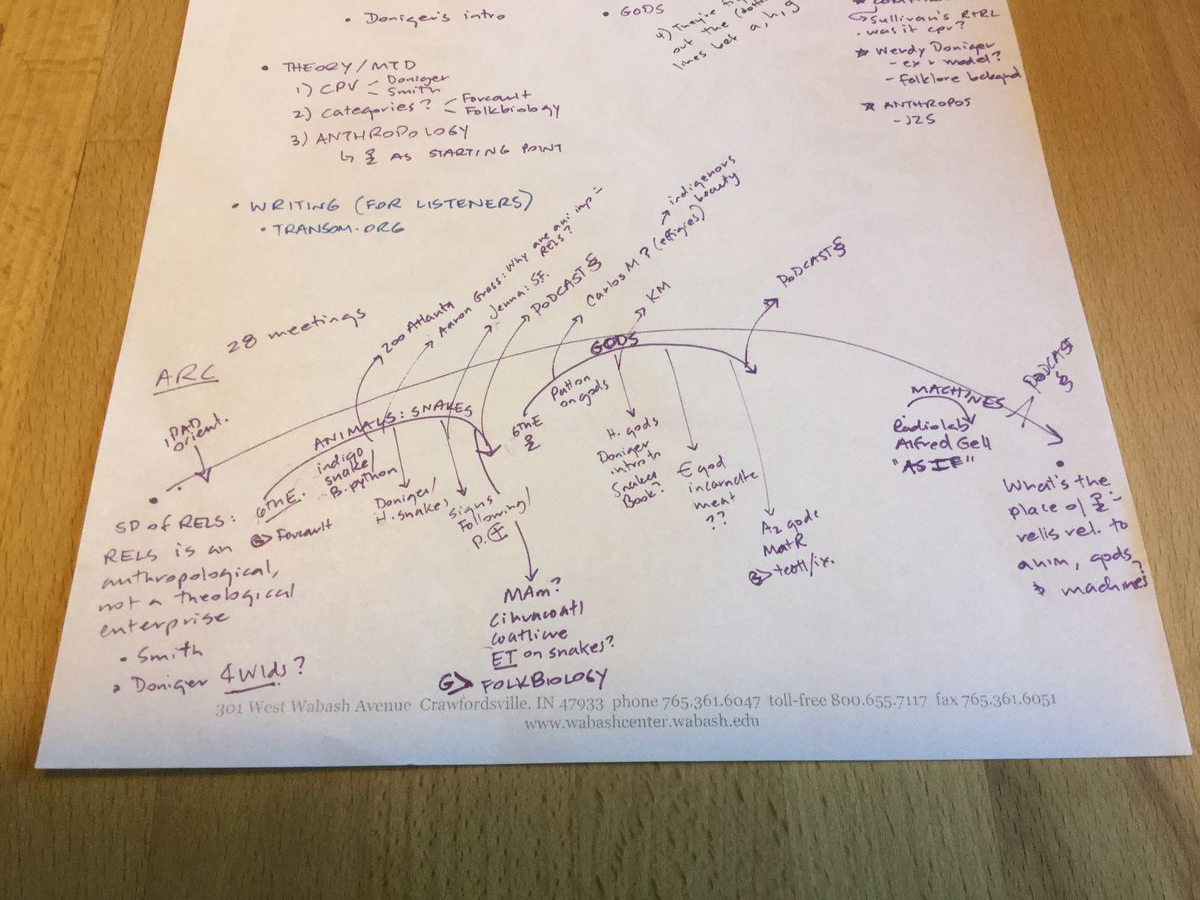
Making Plans
In her introduction to Animals in the Four Worlds: Sculptures from India (1989), Wendy Doniger observes that animals and gods inhabit the borderlands of human communities, and as I mention in a piece for Religious Studies News, this notion frames my course. My students and I are investigating how humans define themselves in contrast to animals, on the one hand, and gods, on the other. After a few introductory sessions (“Why animals?” and “Why gods?”), we started learning about snakes as biological creatures. Last week, we ventured into herpetology, and this coming week we’ll investigate the Eastern indigo and visit ZooAtlanta to meet a few.
On Friday, I met with the graduate student podcasting groups. (The students have been assigned groups for their podcast assignments, and the course’s Writing Across the Curriculum consultant met with the undergraduates.) The podcast assignment, which I’ll say more about in a future post, asks the groups to choose one of two approaches, and the three graduate student groups chose to introduce a new animal in their first episode. Before our group meetings, they submitted a signed work plan with dates and roles for each group member.
As I reviewed the plans, I realized that some of the groups started by imagining the second podcast episode and working backward. The hummingbird group, let’s say, decided they want to talk about Huitzilopochtli, the Aztec god “Hummingbird Left Hand Side,” in their second episode, so they would need to discuss hummingbirds in the first one. This approach to research—knowing where you want to end up before you get there—works in some contexts. In fact, it’s how many of us design courses, which is “an important and serious intellectual (or artistic) act, perhaps even [thought of] as a kind of scholarship,” according to Ken Bain in What the Best College Teachers Do (Harvard University Press, 2004).
We start with a course’s learning outcomes, the ideas and skills we want students to acquire during  the semester, and then select readings and plan activities that help them achieve those goals. The earliest draft of the “learning objectives” for my class was simply, “What’s the place of people in religions relative to animals, gods, and machines?” After sketching my course arc, including the mini-arc units on animals, gods, and machines, I began selecting readings and drafting assignments that would lead students toward an answer to our question.
the semester, and then select readings and plan activities that help them achieve those goals. The earliest draft of the “learning objectives” for my class was simply, “What’s the place of people in religions relative to animals, gods, and machines?” After sketching my course arc, including the mini-arc units on animals, gods, and machines, I began selecting readings and drafting assignments that would lead students toward an answer to our question.
In a long process of decision making that involved narrowing some topics (our only animal is snakes) and completely omitting others (Signs Following practices), I created a course that moves students through a process of discovery. By studying snake basics together before exploring snakes in other cultures and religions, my hope is that students will discover differences (and similarities) that push them to question their assumptions of “what a snake is,” as well as “what Hinduism is” and perhaps even “what religion is.”
When I designed the course, I started with learning outcomes, but by design, I wanted the students to start with a single animal and work through a process of discovery. In last week’s group meetings, I asked the graduate students to rethink their plans. I encouraged them to begin with the animal (not Huitzilopochtli or Hanuman). What makes a monkey a monkey (biologically speaking)? What does an elephant eat? Why are hummingbirds iridescent? Rather than plan their research with an eye toward religion, read widely, take time to explore their animal, and be open to learning something new and unexpected. Then be open to the unexpected affecting what happens next.
This is the 4th post in this series by Molly Bassett this semester (Fall 2015).